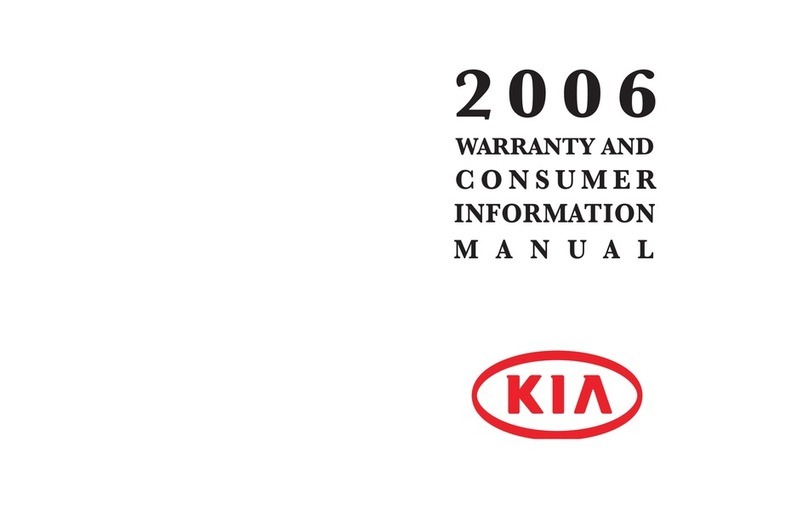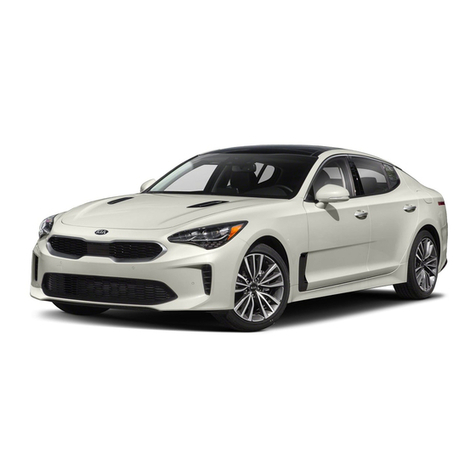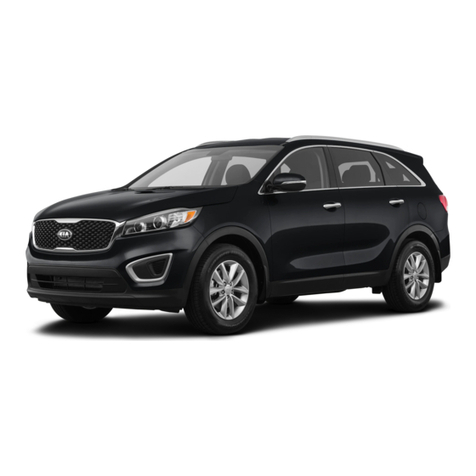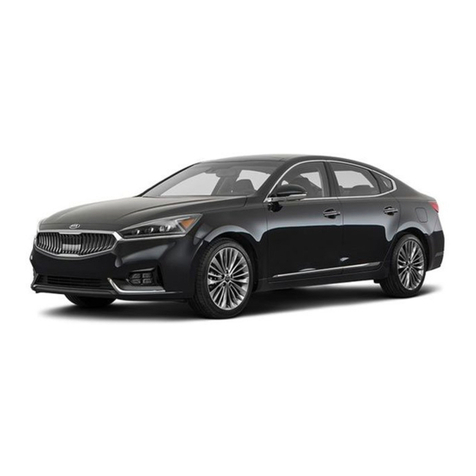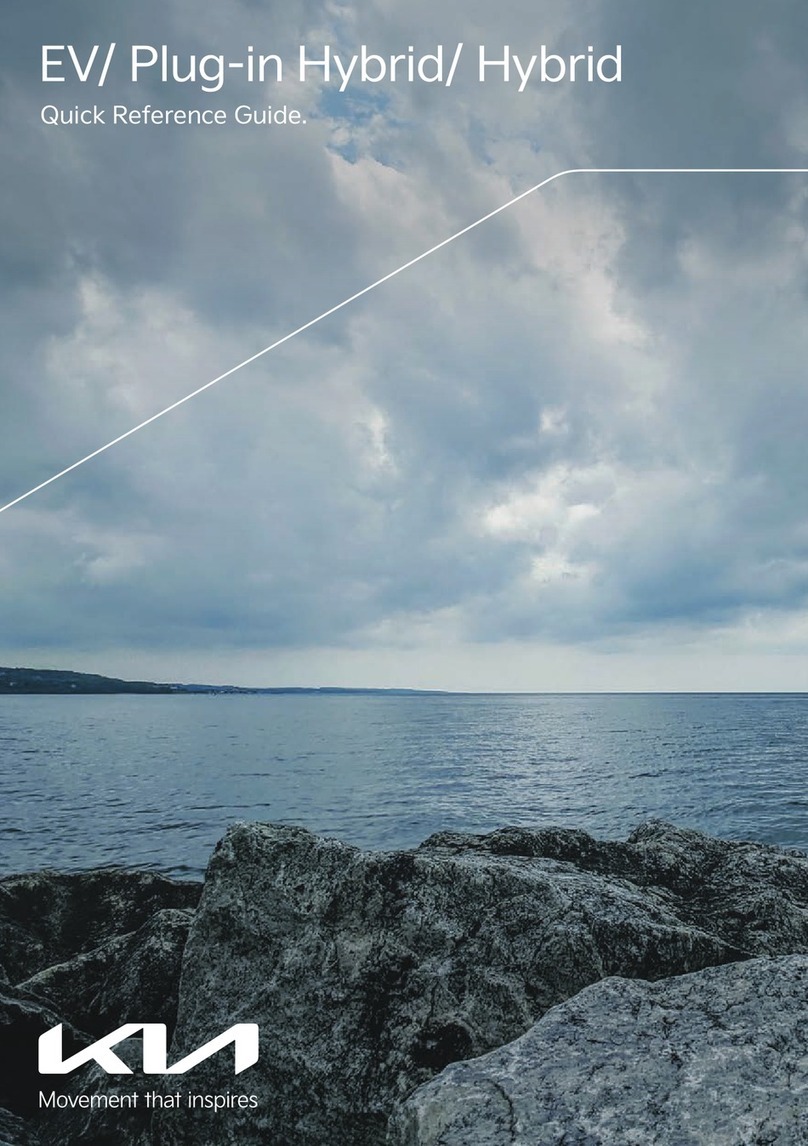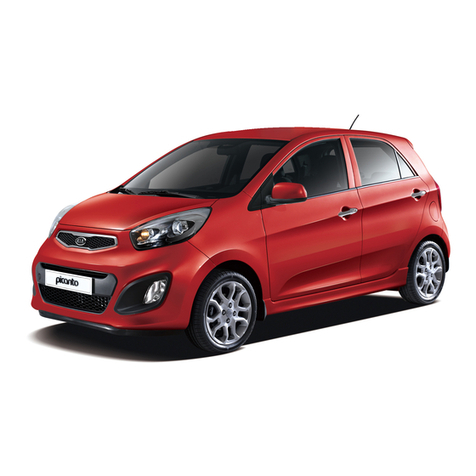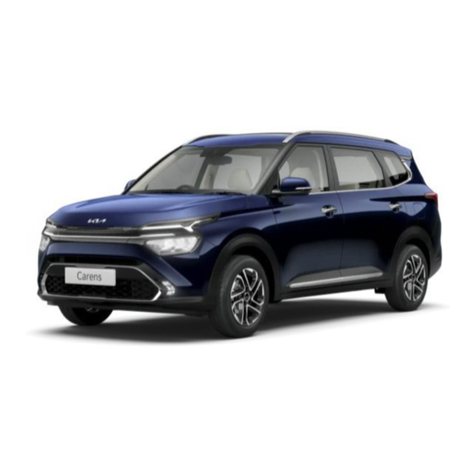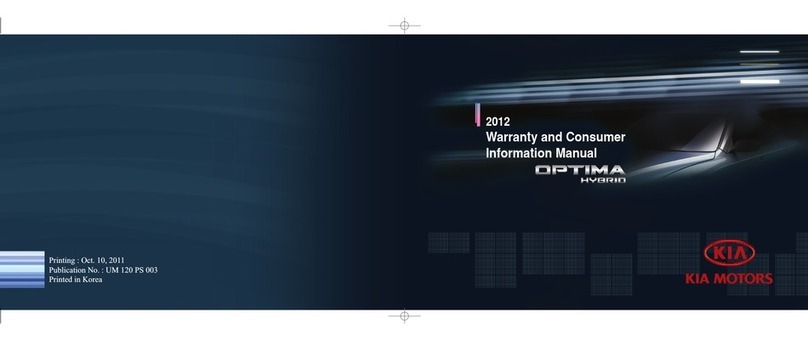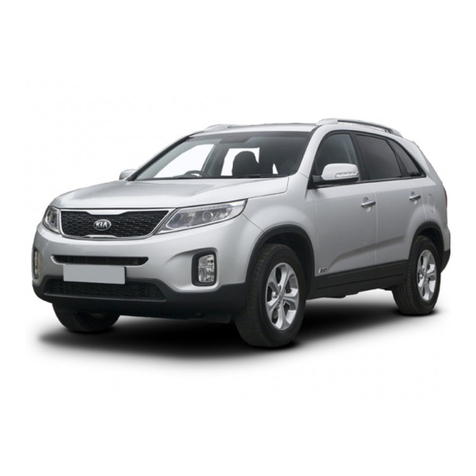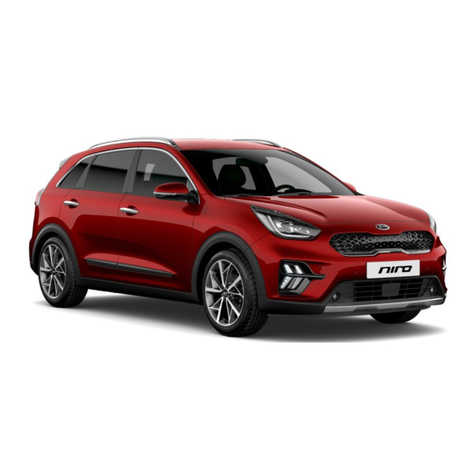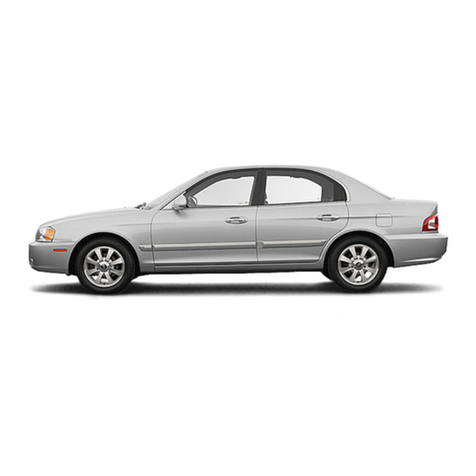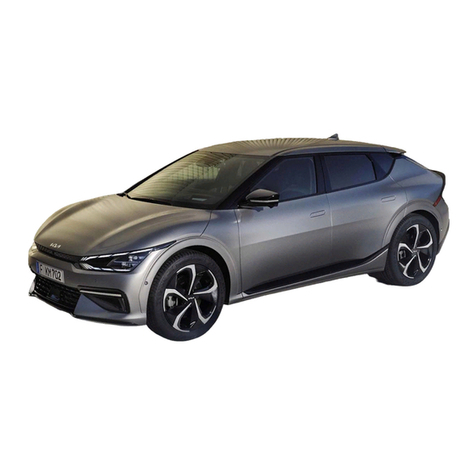
Electric vehicle guide
41
Main components of electric vehicle
Main components of electric
vehicle
僅
OBC
: Transforms (inverts) AC power
charge power, to DC power, to charge
the high voltage battery.
僅
Inverter
: Transforms direct current
into alternating current to supply
power to the motor, and transforms
alternating current into direct current
to charge the high voltage battery.
僅
LDC
: Transforms (converts) power
from the high voltage battery to low
voltage (12V) to supply power to the
vehicle (DC-DC).
僅
VCU
: Functions as a supervisory con
-
troller of electric vehicle
僅
Motor
: Uses electrical energy stored
inside the high voltage battery to
drive the vehicle (functions like an
vehicle in a standard vehicle).
僅
Reduction gear
: Delivers rotational
force of the motor to the tires at
appropriate speeds and torque.
僅
High voltage battery (lithium-ion)
:
Stores and supplies power necessary
for the electric vehicle to operate (12V
battery provides power to the vehicle
features such as lights and wipers).
* OBC: On-Board Charger
* LDC: Low Voltage DC-DC Converter
* VCU: Vehicle Control Unit
僅 Do not remove or disassemble high
voltage components and high voltage
battery connectors and/or wiring
(orange cabling). Also, be careful not
to damage high voltage components
and the high voltage battery. It may
cause serious injury and significantly
impact the performance and durabil
-
ity of the vehicle.
僅 When inspection and maintenance is
required for high voltage components
and the high voltage battery, have the
vehicle inspected by an authorized
Kia dealer.
High voltage (HV) battery (lith
-
ium-ion)
僅 The charge amount of the high volt
-
age battery may gradually decrease
when the vehicle is not driven or
charged.
僅 The battery capacity of the high volt
-
age battery may decrease over time
when the vehicle is stored in high or
low temperatures.
僅 Distance to empty may vary depend
-
ing on the driving conditions (cargo,
rain, snow, wind, road surfaces), even
if the charge amount is the same. The
high voltage battery may expend
more energy when driving a fast pace
or uphill. These actions may reduce
the distance to empty.
僅 The high voltage battery is used when
using the air conditioner/heater. This
may reduce the distance to empty.
Make sure to set moderate tempera
-
tures when using the air conditioner/
heater and/or use the pre-condition
-
ing feature prior to departures.
僅 Natural degradation may occur with
the high voltage battery depending
on the number of years the vehicle
was used and/or the number of
charging cycles. This will reduce the
distance to empty over time.
